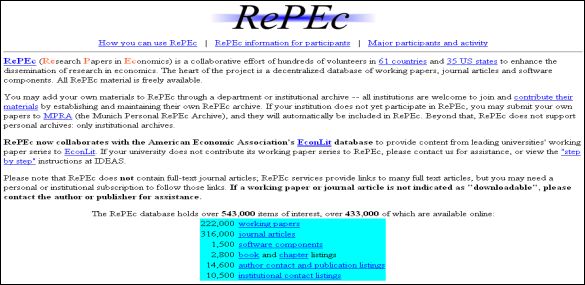LU POUR VOUS D'OCTOBRE 2007 : livres du mois - sites du mois - working papers
Tous les lu pour vous
LES LIVRES DU MOIS
Le vieillissement en Europe. Aspects biologiques, économiques et sociaux.
Barnay T., Sermet C.
Paris : la Documentation française : 2007 : 188 p.
Réunissant les analyses de spécialistes, cet ouvrage évoque les multiples conséquences du vieillissement de la population qui touche les pays européens, à travers quelques thèmes centraux : l'état de santé des personnes âgées, les solidarités familiales, l'emploi des seniors, les dépenses de santé et celles liées à la retraite, à la dépendance... En 2050, un Européen sur trois aura plus de 60 ans et un sur dix plus de 80 ans : c'est la plus grande mutation démographique de l'histoire contemporaine du continent. Elle soulève d'ores et déjà nombre de questions sanitaires, économiques, sociales et politiques : comment vieillira-t-on demain ? Dans quel état de santé ? Dans quelles conditions de vie ? (montants des retraites, prise en charge de la dépendance et des dépenses de santé) (4e de couverture).
Le mythe du "trou de la sécu".
Duval J.
Paris : Raisons d'Agir : 2007 : 135 p.
A en croire les médias et les débats politiques, la Sécurité sociale serait menacée de faillite par un déficit abyssal. Pour faire face à l'augmentation des dépenses et au vieillissement de la population, notre système de protection sociale, créé en 1945 pour donner - la garantie à chaque homme qu'en toutes circonstances il pourra assurer sa subsistance et celle de personnes à sa charge -, serait condamné à se réformer sans cesse : déremboursements, réduction des prestations, hausse des cotisations, voire privatisation. Chercheur au CNRS, Julien Duval renverse les termes du problème : il n'y a pas de déficit de la Sécu mais un besoin de financement que les gouvernements successifs ont décidé de ne pas satisfaire en multipliant depuis 1993 les exonérations de charges sociales. En effet, l'affaiblissement de la protection sociale découle non pas d'arbitrages techniques mais d'un choix politique: le transfert généralisé des risques du capital vers le travail (4è de couverture).
Le livre noir de la santé.
Bardy G.
Paris : L'Archipel : 2007 : 354 p.
Hôpitaux dangereux, services d'urgence au bord de l'asphyxie, Sécurité sociale en péril, personnels soignants mal formés, hygiène en question, vétusté des établissements, négligences en tout genre... Naguère désigné par l'OMS comme le meilleur au monde, le système de santé à la française menace ruine. Légalité d'accès aux soins ? Un mythe. La médecine à plusieurs vitesses ? Un fait. Notre consommation de médicaments, la plus importante d'Europe, assèche les caisses et cause plus de dix mille décès accidentels par an. Des populations entières sont traitées dans des conditions déplorables, notamment les personnes âgées. Les déserts médicaux gagnent du terrain dans les zones rurales et les banlieues. Les infirmières fuient les hôpitaux publics, dont 75 % sont en déficit. Les médecins, eux, sont au bout du rouleau. Et les étudiants appelés à les remplacer sont déjà découragés... Depuis trente ans, les ministres passent, sans qu'aucune mesure soit parvenue à combler le déficit abyssal de l'assurance maladie. L'hôpital, ce bateau ivre ingouvernable, est-il impossible à réformer ? S'appuyant sur des études connues des seuls milieux médicaux, ce Livre noir dresse un bilan très critique du système de santé en France (4e de couverture).
Panorama critique des réformes hospitalières de 1789 à nos jours.
Clément J.-M.
Bordeaux : Les Etudes hospitalières : 2007 : 95 p.
Ce précis sera très certainement apprécié par tous ceux qui veulent comprendre le sens des réformes hospitalières. Il s'ouvre par une étude concise mais éclairante des diverses réformes depuis la Révolution de 1789. Il se poursuit par un examen critique - dans le meilleur sens du terme – des différentes réformes sous la Ve République : les ordonnances de décembre 1958, la loi du 31 décembre 1970 et celle du 31 juillet 1991, les ordonnances du 24 avril 1996, du 4 septembre 2003 et du 2 mai 2005, sans oublier la loi du 4 mars 2002. Enfin cet opuscule se termine par une réflexion libre sur le sens de ces réformes (4e de couverture.)
Costs of occupational injuries and illnesses.
Coûts des accidents et des maladies professionnelles.
Leigh J.P., Markowitz S., Fahs M., Landrigan P.
Ann Arbor : The University of Michigan Press : 2003 : 13-310 p.
Most of us between the ages of 22 and 65 spend 40 to 50, percent of our warking hours at work. Every year, million of us suffer injuries, diseases, and deaths in our workplaces. Yet little effort has been made to estimate either the extent of these injuries, deaths, and diseases or their cost to the economy. Thus, important questions about workplace safety and the economic resources expended due to workplace health problems remain unanswered. In this study, we address these questions by presenting estimates of the incidence, prevalence, and costs of workplace-related injuries, illnesses, and deaths for the entire civilian workforce of the United States in 1992. This book also considers controversies surrounding cost methodologies, estimate how these costs are distributed across occupations, consider who pays the costs, and address some policy issues.
LES SITES DU MOIS
IZA Institute for the study of labor
http://www.iza.org/

Presentation
Institut de recherche indépendant basé à Bonn (Allemagne). Ses recherches se concentrent sur l'analyse économiques des marchés du travail au niveau national et international. Il élabore des avis à destination des décideurs politiques dans ses domaines d'étude. Son site présente ses thèmes de recherche : évaluation des programmes concernant le marché du travail, économie comportementale et personnelle, migrations, marché du travail et institutions, perspectives du marché du travail, emploi et développement.
Plusieurs ressources sont à disposition de l'internaute :
- La littérature grise (working papers) est en texte intégral. Une base de données permet une interrogation par auteur, titre, références ou année.
- Un « Who's who » in labor economics, interrogeable par nom, affiliation, domaine de recherche, publications.
- Une base de données d ‘enquêtes et de recherche spécialisées dans le domaine de l'économie du travail.
RePec (Research Papers in Economics)
http://repec.org/
Presentation
Repec est un réseau impliquant une centaine de collaborateurs bénévoles (59 pays et 35 états fédéraux américains) dont le but est de mettre en valeur la littérature grise en économie. L'outil principal de ce réseau est une base de données décentralisée contenant des documents de travail, des articles de périodiques et des composantes de logiciels. Cette base de données contient à ce jour plus de 530 000 références dont plus de 420 000 disponibles en ligne.
La base est interrogeable sur plusieurs sites :
- Ideas : http://ideas.repec.org/
- EconPapers : http://econpapers.repec.org/
NEP (New Economics Papers)
http://nep.repec.org/
Presentation
Ce site recense les nouvelles publications introduites dans la base de données Repec. On peut recevoir des alertes par e-mail et les archives, classées par thèmes sont disponibles sur les sites d'Ideas et d'Econ papers.
VU DE L'ETRANGER : QUELQUES WORKING PAPERS ANALYSES
Economie de la santé
Forecasting the global burden of Alzheimer's disease. 
Prévoir le fardeau global de la maladie d'Alzheimer.
Brookmeyer R., Johnson E., Ziegler-Graham K., Arrighi H.M.
Baltimore : John Hopkins University : 2007 : 22 p.
The goal was to forecast the global burden of Alzheimer's disease and evaluate the potential impact of interventions that delay disease onset or progression. Methods: A stochastic multi-state model was used in conjunction with U.N. worldwide population forecasts and data from epidemiological studies on risks of Alzheimer's disease. Findings: In 2006 the worldwide prevalence of Alzheimer's disease was 26.6 million. By 2050, prevalence will quadruple by which time 1 in 85 persons worldwide will be living with the disease. We estimate about 43% of prevalent cases need a high level of care equivalent to that of a nursing home. If interventions could delay both disease onset and progression by a modest 1 year, there would be nearly 9.2 million fewer cases of disease in 2050 with nearly all the decline attributable to decreases in persons needing high level of care. Interpretation: We face a looming global epidemic of Alzheimer's disease as the world's population ages. Modest advances in therapeutic and preventive strategies that lead to even small delays in Alzheimer's onset and progression can significantly reduce the global burden of the disease.
An analysis of the impact of age and proximity of death on health care costs in Ireland. 
Analyse de l'impact de l'âge et la proximité du décès sur les coûts des soins de santé en Irlande.
Layte R.
Organisation de coopération et de développement économiques. (OCDE).
Dublin : ESRI : 2007/05 : 15 p.
Research has shown that older individuals are far more likely to avail of health care and there is concern in a number of countries that the trend toward population ageing may mean that health care expenditures increase to unsustainable levels. However, there is a growing body of evidence that the approach of death rather than age per se may be the main determinant of health care costs. Previous analyses of the relationship between proximity to death and costs have used rare longitudinal data on costs and whether died and none have used a national sample. In this paper we use a more commonly found data type – a national panel survey to show that proximity to death is indeed a more significant predictor of expenditure on GP and hospital services than age. Using random effects panel models we show that there is a significant gradient in costs as death approaches. Controlling for proximity to death there is no age gradient in costs. This conclusion remains unchanged adjusting for differential health inpatient costs across age groups. In fact, adjustment steepens the gradient in costs as death approaches.
Médicaments
Market effects of generic entry : the role of physicians and of non-bioequivalent competitors.

Les effets de marché lors de l'entrée d'un médicament générique : rôle des médecins et des produits concurrents non bio-équivalents.
Gonzales J., Sismeiro C., Dutta S., Stern P.
Munich : Munich Personal RepEc Archive : 2007/06 : 39 p.
Patent expiration represents a turning point for the brand losing patent protection as bioequivalent generic versions of the drug quickly enter the market at reduced prices. In this paper, we study how physician characteristics and their prescribing decisions impact the competition among molecules of a therapeutic class, once generic versions of one of these molecules enter the market. Specifically, we study the evolution of the Selective Serotonine Reuptake Inhibitors (SSRIs) after the introduction of generic versions of fluoxetine (brand name Prozac) in the United Kingdom (UK). Our results suggest that, to fully understand the market evolution after generic entry, public health officials need to consider the marketing activities of pharmaceutical companies and determine how (1) individual physicians prescribe all competing drugs, and (2) respond to drug prices and marketing actions. For example, we find that a group of physicians sensitive to detailing switch from fluoxetine to nonbioequivalent branded alternatives after patent expiration, as Prozac significantly reduces its marketing support. Consequently, the market share of fluoxetine decreases despite being available at significant price discount under generic form, and despite the increase of prescriptions by price-sensitive physicians. Hence, governments interested in assessing generics diffusion should consider the prescribing across all competitors, whether or not bioequivalent, and determine the size of physician segments sensitive to pharmaceutical marketing activity and prices.
The impact of patenting on new product introductions in the pharmaceutical industry. 
L'impact du brevet sur l'introduction de nouveaux médicaments dans l'industrie pharmaceutique.
Stuart G., Matthew H.
Munich : University library of Munich : 2007/08 : 43 p.
Since Comanor and Scherer (1969), researchers have been using patents as a proxy for new product development. In this paper, we reevaluate this relationship by using novel new data. We demonstrate that the relationship between patenting and new FDA-approved product introductions has diminished considerably since the 1950s, and in fact no longer holds. Moreover, we also find that the relationship between R&D expenditures and new product introductions is considerably smaller than previously reported. While measures of patenting remain important in predicting the arrival of product introductions, the most important predictor is the loss of exclusivity protection on a current product. Our evidence suggests that pharmaceutical firms are acting strategically with respect to new product introductions. Finally, we find no relationship between firm size and new product introductions
Protection sociale
Does free supplementary health insurance help the poor to access health care ? Evidence from France. 
La gratuité de l'assurance complémentaire aide-t-elle à l'accès aux soins des populations défavorisées ? Evidence issue de l'expérience française.
Grignon M., Perronnin M., Lavis J.N.
Ontario : McMaster University : 2006 : 37 p.
Le gouvernement français a introduit "un plan d'assurance-maladie complémentaire" en 2000. Pour évaluer l'impact de ce plan sur ses bénéficiaires, les auteurs utilisent dans ce document un ensemble de données longitudinales afin de comparer, pour un même individu, l'évolution de ses dépenses avant et après l'inscription à ce plan.
Soins de santé primaires
Service motives and profit incentives among physicians. 
Godager G., Iversen T.
Boston : Université de Boston : 2007/04 : 36 p.
We model physicians as health care professionals who care about their services and monetary rewards. These preferences are heterogeneous. Different physicians trade off the monetary and service motives differently, and therefore respond differently to incentive schemes. Our model is set up for the Norwegian health care system. First, each private practice physician has a patient list, which may have more or less patients than he desires. The physician is paid a fee-for-service reimbursement and a capitation per listed patient. Second, a municipality may obligate the physician to perform 7.5 hours per week of community services. Our data are on an unbalanced panel of 435 physicians, with 412 physicians for the year 2002, and 400 for 2004. A physician's amount of gross wealth and gross debt in previous periods are used as proxy for preferences for community service. First, for the current period, accumulated wealth and debt are predetermined. Second, wealth and debt capture lifestyle preferences because they correlate with the planned future income and spending. The main results show that both gross debt and gross wealth have negative effects on physicians' supply of community health services. Gross debt and wealth have no effect on fee-for-service income per listed person in the physician's practice, and positive effects on the total income from fee-for-service; hence, the higher income from fee-for-service is due to a longer patient list. Patient shortage has no significant effect on physicians' supply of community services, a positive effect on the fee-for-service income per listed person, and no effect on the total income from fee-for service. These results confirm physician preference heterogeneity.
Rationing the public provision of healthcare in the presence of private supplements : evidence from the italian NHS. 
Le rationnement de l'offre de soins publique en présence d'offres de soins privées : à propos de l'expérience du système de santé italien.
Fabbri D., Monfardini C.
Turin : CHILD : 2006/11 : 30 p.
In this paper we assess the relative effectiveness of user charges and administrative waiting times as a tool for rationing public healthcare in Italy. We measure demand elasticities by estimating a simultaneous equation model of GP primary care visits, public specialist consultations and private specialist consultations, as if they were part of an incomplete system of demand. We find that own price elasticity of the demand for public specialist consultation is about -0.3, while administrative waiting time plays a less important role. No substitution exists between the demand for public and private specialists, so that user charges act as a net deterrent for over-consumption. The public provision of healthcare does not induce the wealthy to opt out. Moreover our evidence suggests that user charges and waiting lists do not serve redistributive purposes.
Systèmes de santé
Measurement of horizontal inequity in health care utilization using European panel. 
Mesure de l'inéquité horizontale dans le recours aux soins. Résultats issus d'un panel européen.
Bago d'Uva T., Jones A.M., Van Doorslaer E.
Amsterdam : Tinbergen Institute : 2007 : 28 p.
Measurement of inequity in health care delivery has focused on the extent to which health care utilization is or is not distributed according to need, irrespective of income. Studies using cross-sectional data have proposed various ways of measuring and standardizing for need, but inevitably much of the inter-individual variation in needs remains unobserved in cross-sections. This paper exploits panel data methods to improve the measurement by including the time-invariant part of unobserved heterogeneity into the need-standardization procedure. Using latent class hurdle models for GP and specialist visits estimated on 8 annual waves of the European Community Household Panel we compute indices of horizontal equity that partition total income-related variation in use into a need- and a non-need related part, not only for the observed but also for the unobserved but time-invariant component. We also propose and compare a more conservative index of horizontal inequity to the conventional statistic. We find that many of the cross-country comparative results appear fairly robust to the panel data test, although the panel based methods lead to higher estimates of horizontal inequity for most countries. This confirms that better estimation and control for need often reveals more pro-rich distributions of utilization.
Planning and market regulation : strengths, weaknesses and interactions in the provision of less inequitable and better quality health care : a literature review. 
Planification et régulation : forces, faiblesses et interactions pour la production d'une moindre inéquité et d'une meilleure qualité des soins : revue de la littérature.
Mackintosh M.
Johannesburg : University of the Witwaterstrands : 2007/03 : 52 p.
This paper argues that planned health care provision and market regulation play distinct roles in relation to the effective provision of equitable health care. Governmental planned provision has a core objective ensuring that health system is redistributive and that the poor have access to competent care. Market regulation has as its central objective the shaping of the role and behaviour of the private sector within the health system. Management of the health system as a whole, which is a governmental responsability, therefore requires the integration of planning and regulation in a manner appropriate to each particular context.






